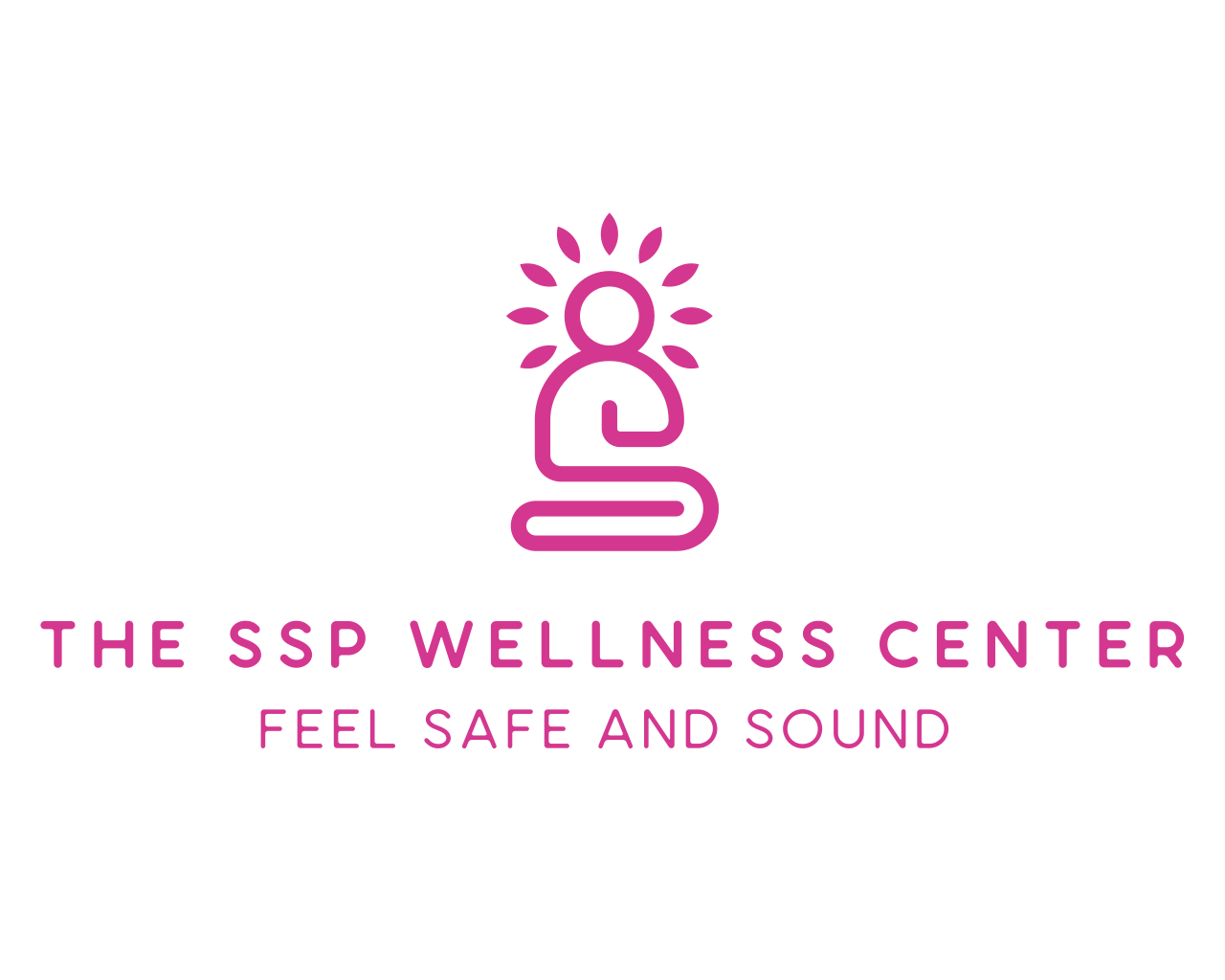You might have heard that the Safe and Sound Protocol (SSP) can help calm your nervous system, improve social connections, or even reduce anxiety—but how does it actually work? Is it really just listening to music? Well, there’s way more going on than that.
If you’re one for the science – stick around. In this article, we’re diving deep into the hows and whys of SSP, so you can understand exactly what’s happening behind the scenes and why this approach is so effective.
By the end of this, you’ll know how SSP works to support your nervous system, how filtered music can literally change the way your brain interprets the world, and why this therapy can make such a big difference for those dealing with anxiety, trauma, chronic conditions, and more.
What is the SSP?
The Safe and Sound Protocol (SSP) is a therapeutic listening program that uses specially filtered music to regulate your nervous system. It consists of 5 hours of music that we break down into individual listening sessions. You don’t listen to it all at once, BUT you do need to listen to the whole 5 hours in increments to reap the benefits.
But this isn’t just about chilling out to relaxing tunes—SSP was developed by Dr. Stephen Porges, a world-renowned scientist and the creator of Polyvagal Theory (we’ll get into that in a sec). It’s designed to help your brain and body shift out of stress and survival mode and into a state where you feel safe, calm, and better able to connect with others, and the world around you.
Dr. Porges has spent decades studying how our nervous system responds to stress and social interactions. His work has reshaped how we understand trauma, stress, and even things like anxiety and depression. He’s a professor of psychiatry and has held positions at top institutions like the University of Illinois, the University of North Carolina, and the Kinsey Institute, where he directs research on traumatic stress. In short, this guy knows his stuff when it comes to how the brain and body interact under stress.
So, what exactly does SSP do? Think of it as a reset for your nervous system. It uses carefully designed music that’s filtered in a very specific way to stimulate your vagus nerve—which is a key player in how your body handles stress, relaxation, and even digestion. The idea is that by gently activating your vagus nerve through sound, SSP helps your brain and body “reset” its stress response, leaving you feeling more emotionally regulated, less anxious, and better able to navigate the world around you.
What is the Vagus Nerve?
Let’s talk about the vagus nerve, because it’s kinda a big deal. The vagus nerve is the longest nerve in your body, running from your brainstem all the way down to your gut, and it’s a major player in your parasympathetic nervous system (aka the system that helps you relax and recover from stress). It’s like your body’s built-in “chill button.”
When your vagus nerve is activated, it tells your body when to calm down, slows your heart rate, and signals to your brain that things are safe. It’s involved in everything from controlling your digestion to regulating your mood. This is why you might hear people talking about the importance of “vagal tone”—the healthier your vagus nerve is, the better your body is at handling stress and keeping you feeling regulated and resilient.
Now, why is the vagus nerve so important to SSP? Well, the music in SSP is specifically designed to stimulate the vagus nerve through your middle ear—yes, your ear! By giving those tiny ear muscles a bit of a workout, it helps your brain process sounds of safety more effectively, which in turn activates the vagus nerve and tells your body to chill out. Pretty clever, right? More on this later.
How Does the SSP Work?
So, how does listening to music actually manage all that? Great question. The SSP music is not just any playlist you could grab off Spotify. It’s filtered in a unique way to target the mid-range sound frequencies that your brain associates with safety, like the tone of someone’s calm voice. And it’s these cues of safety that stimulate the vagus nerve, which, as we just learned, is key to helping you feel safe and calm.
And the music doesn’t just magically make you feel better—it works by engaging the muscles in your middle ear. These muscles play a huge role in helping your brain filter sounds, and relay messages to your nervous system.
SSP basically gives these muscles a “workout,” helping them tune back into sounds and cues of safety. Over time, this helps retrain your nervous system to recognize safety in your environment, allowing it to shift out of that constant state of hypervigilance or shutdown.
This is why SSP can be so powerful for people who have been stuck in fight-or-flight (when your body is stuck on high alert) or shutdown mode (when you feel emotionally numb or disconnected). It helps the nervous system recalibrate, allowing you to feel calmer, more connected, better able to engage socially, and it sets the foundation for overall wellness. And it does all of this by simply tuning into the right kind of sound.
But to really understand how SSP works, we need to go deeper into the science behind it.

Polyvagal Theory: The Backbone of SSP
The Safe and Sound Protocol (SSP) is deeply rooted in Polyvagal Theory, which explains how our nervous system operates in response to stress and safety.[*]
Polyvagal Theory tells us that, in a healthy regulated state, our nervous system shifts fluidly between three main states[*]:
- Ventral Vagal State (Social Engagement): This is the sweet spot. When you’re in this state, you feel safe, calm, and able to connect with others. It’s the state where social engagement, joy, and emotional connection happen. You’re reading your environment correctly and can smoothly shift into other states when necessary.
- Sympathetic State (Fight or Flight): When your nervous system detects danger, it shifts into this gear. Your heart races, your breathing speeds up, and your body prepares to either fight off a threat or run for it. Think of it as your emergency response mode.
- Dorsal Vagal State (Shutdown/Freeze): If the danger feels overwhelming or inescapable, your body hits the brakes and drops into this state. You might feel disconnected, emotionally numb, or frozen. It’s your nervous system’s way of protecting you when it thinks there’s no way out.
So, what does this mean for you? Well, we move between these states naturally every day. That’s normal. But when we get stuck in the sympathetic or dorsal vagal state, that’s where problems arise. You might find yourself constantly anxious, hypervigilant, or completely checked out, unable to feel present or connected.[*] That’s where SSP steps in to help shift you back into a healthy, balanced state.[*]
Now, how does your body know which state to be in? This is where neuroception comes into play.
Neuroception: Your Body’s Safety Radar
Neuroception is like your body’s built-in radar system, always on the lookout for safety or danger.[*] The key thing to remember here is that neuroception is subconscious—it’s not something you’re actively thinking about. Your brain is constantly gathering information from the environment, from cues like facial expressions, body language, tone of voice, and sounds, and deciding whether it’s time to chill or panic.
When neuroception is working well, your nervous system accurately picks up on these safety cues, letting you move into the ventral vagal state—that calm, connected state where social engagement and healing happen.
But when neuroception goes off track—because of trauma, chronic stress, or illness—it can start misinterpreting neutral or even safe signals as threats[*]. This is when you end up stuck in fight-or-flight or shutdown mode. Your body becomes hyper-alert, ready to protect you from danger, even when there’s no real threat. It’s exhausting and can lead to a host of mental and physical health issues.
The Social Engagement System
When your neuroception is functioning well, you engage more easily with others.You can make eye contact, read facial expressions, and feel safe in social settings.[*]
This is thanks to your social engagement system, which is the part of your nervous system that helps you connect with people. The social engagement system is critical for forming healthy relationships, maintaining emotional stability, and feeling connected to the world.[*]
But when your neuroception is off, your social engagement system can’t function properly. You might feel constantly on edge in social situations, misread facial cues, or avoid interaction altogether because it feels overwhelming.
How SSP Helps Reset Your Neuroception and Social Engagement
So, how does SSP fit into all of this? SSP helps reset your neuroception by using specially filtered music to signal safety to your nervous system. The music is designed to emphasize mid-range frequencies, which are the sounds we associate with calm human voices. Think of how soothing a soft, reassuring voice can be—that’s exactly the kind of signal SSP amplifies.
When you listen to SSP, it trains your nervous system to recognize cues of safety again. This, in turn, boosts your social engagement system, making it easier to connect with others, read facial expressions, and feel more at ease in everyday life. Over time, your nervous system becomes more adaptable and able to smoothly shift between states as needed, rather than getting stuck in fight-or-flight or shutdown.
The result? Your body feels safer and more receptive to life. And this is the crucial part. This felt sense of safety is what sets the foundation for healing. That’s why the SSP can support so many health conditions indirectly – by restoring nervous system resilience, reducing the stress response and creating a sense of whole body safety.[*]
In simple terms, by recalibrating how your body perceives safety and danger, SSP helps restore the foundation your body needs to optimally function and heal.

How Auditory Processing Connects to the Nervous System
Let’s shift gears and talk about sound—this is where the SSP magic really happens..
Your nervous system and auditory processing are tightly linked. The sounds you hear can either signal safety (like the soothing tone of a loved one’s voice) or danger (like a loud bang or scream). This is why auditory processing plays such a critical role in how you experience the world around you. Your brain relies on cues from your auditory system to decide whether it’s safe to relax or whether it needs to activate stress responses.[*][*]
In people with dysregulated nervous systems and faulty neuroception, their auditory processing system might be a little off. They could misinterpret neutral sounds as threatening or find it difficult to focus on calming sounds. This is where SSP steps in to retrain the auditory system.
Here’s how:
Middle Ear Muscles, Auditory Processing and the Social Engagement System
Remember we said that the SSP gives those lovely little middle ear muscles a workout? That’s because the muscles of the middle ear (specifically, the stapedius and tensor tympani muscles) play a key role in filtering sounds. They help us tune into mid-range frequencies (the sound of safe human voices, rustling leaves, the coo of a mom to her baby) and modulate low- and high-pitched sounds (like yelling or sudden loud noises) that can be perceived as threatening.
When the middle ear muscles “tune in” to calming frequencies, they send signals to the brain that reinforce safety, activating the ventral vagal system. This activation encourages the body to relax, engage socially, reduce the fight-or-flight response, and put us in ‘healing’ mode.
Indirect Stimulation of the Vagus Nerve
While the middle ear muscles themselves don’t directly stimulate the vagus nerve, the improved auditory processing and the calming effect of mid-range frequencies create a neuroception of safety—a key element of Polyvagal Theory. This in turn activates the vagus nerve, specifically the ventral vagal complex, helping to regulate the autonomic nervous system.
Through this process, the specially filtered music in SSP engages the middle ear muscles, which then help modulate the nervous system’s response to the environment. The improved functioning of the middle ear muscles allows the nervous system to accurately perceive safety, indirectly stimulating the vagus nerve and promoting a state of calm, healing and social engagement.[*]
Phew, still with me?
The Filtered Music of SSP: Why It’s Not Just Regular Tunes
Now, let’s get into the details of how SSP music is actually filtered to make all of this happen.
The SSP music you’ll listen to has been specially filtered to emphasize those mid-range frequencies that are most closely associated with safe human speech. And that’s why it sounds a little ‘off’. Don’t adjust your set my friends, it’s supposed to sound kinda tinny.
But here’s where it gets even more interesting: SSP doesn’t just emphasize safe frequencies, it modulates the high and low frequencies that might signal danger (like shouting or loud, sudden noises). This helps retrain your auditory system to focus on safety cues, allowing your nervous system to gradually shift out of survival mode.
Over time, listening to SSP’s filtered music helps your neuroception improve, making your body more attuned to safety and social cues in the world around you.
How SSP Supports Overall Health and Healing
While SSP is best known for helping with things like auditory processing and social engagement, its benefits actually go much deeper.
Once your auditory system and nervous system are working better together, something magical happens: you start to feel safer, more socially connected, and you set the foundation for real healing.
A regulated nervous system is crucial for overall health. When your nervous system is regulated and resilient, your body feels safe enough to get back to the important stuff—like digesting food properly, keeping your immune system in check, and healing from everyday wear and tear. But when you’re constantly stuck in survival mode (hello, fight-or-flight), all those processes get thrown off, and your body stays on high alert, ready for danger.[*]
That’s why a dysregulated nervous system can lead to things like chronic inflammation, digestive problems, or even disease. By restoring the nervous system and re-establishing that all-important sense of safety, SSP lets your body switch gears—back to a state where it can focus on healing and restoration. This is why people with chronic health issues often notice improvements in their overall well-being after doing SSP.
In short, when your nervous system is regulated, your body can function like it’s supposed to, and that helps with everything from mental health to physical recovery.
So, whether you’re dealing with chronic conditions, emotional overwhelm, or just feel stuck in your healing journey, regulating your nervous system is often the key that unlocks everything else.
But the benefits don’t stop there. When your nervous system is regulated, other therapies and practices—like counseling, trauma therapy, or even physical health treatments—can work more effectively. Your body is no longer in survival mode, so it can actually integrate other therapies and focus on healing and growth.[*][*]
By emphasizing sounds that signal safety and stimulate the vagus nerve, SSP helps you move out of fight-or-flight or shutdown modes and into a state of safety, connection, and resilience.
Ready to learn more or get started? Reach out to us and we’ll guide you through your SSP journey!

